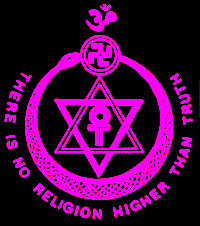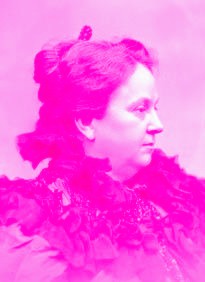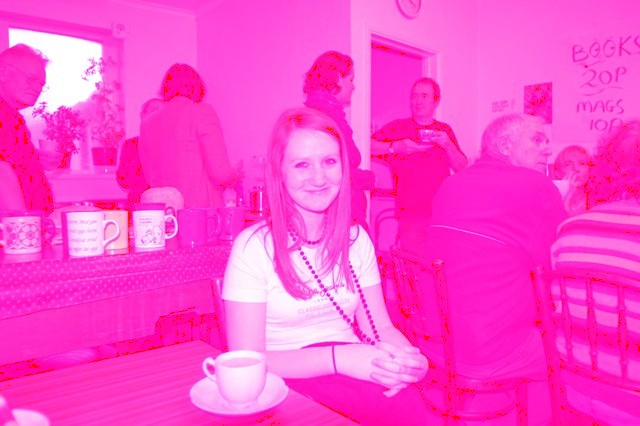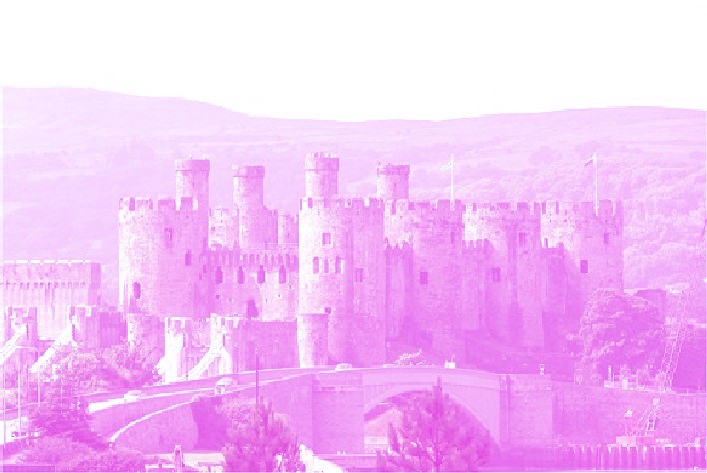The Scott Memorial,
A familiar
Theosophy
an outstanding introductory work on
Theosophy by a Student of Katherine Tingley entitled “Elementary
Theosophy”
Katherine Tingley
1847 – 1929
Founder & President of the
Point Loma Theosophical Society 1896
-1929
She and her students produced a series
of informative
Theosophical works in the early years of
the 20th century
ELEMENTARY
By
A Student of Katherine Tingley
Chapter
7
The
Seven in
Man
and Nature
When, as children, we begin our study of science, we
are told that matter exists in three states: solid, liquid and gaseous. That
does very well as a first step.
In the same way the student of Theosophy will begin by
Paul's division of human nature into body, soul and spirit.
But in both cases, as soon as we come close to the
subject, we find that the three will not do, will not carry us far beyond the
threshold of our study.
Human nature, and nature without, are alike sevenfold.
The number seven runs across the pattern in every direction. Science knows of
many sevens, but she has not yet learned to regard seven as a sort of abstract
map by means of which she could walk much faster in every field of
investigation. For ages, Theosophy has known it to be one of the keys to which
the universe is tuned. Let us study it first in the nature which is outside us.
The finest particles of ordinary matter are called
molecules. Sometimes these fly free from each other; that we call the gaseous
state of matter. But short of that entire freedom there is the liquid state,
where the molecules move readily around each other, but remain in closer
contact.
And thirdly there is the solid state. But of this
there are two divisions, the crystalline and the colloid or gelatinous. And
again, of the colloid there are two conditions, living and not living. The
flesh of man and animals and the growing tissues of plants are composed of
living colloid.
In all these states matter is molecular, exists as
molecules. But under certain conditions the molecules break up into the still
smaller particles called atoms. We then have atomic matter, said to constitute
one of the sets of rays emitted by radium.
And again, the atoms themselves may break up into the
still finer particles called corpuscles or electrons. These constitute still
another set of rays.
So from this point of view the seven states of matter
are:
Corpuscular
or subatomic
Atomic
Gaseous
Liquid
Living
Colloid
Inanimate
Colloid
Crystalline
with numbers 3 through 7 being molecular.
But the seven runs across nature in another way. A
famous Russian chemist found that if all the elements known to chemistry were
arranged one after another in the order of their atomic weights, beginning with
the lightest, the eighth, fifteenth, twenty-second, and so on, had similar
properties to the first; the ninth, sixteenth, and so on, to the second. Thus
it became clear that there was a natural arrangement of all the chemical
elements into seven great families. The seven notes of the musical scale, and
the seven colors of the prismatic scale, are of course familiar to every one.
In respect to motion, the American mathematician
Southwell, dealing with the nebular theory, has also worked out a natural seven
which he thus states:
If two masses are moving in the same plane and at the
same mean distance from the sun and are situated at an angular distance greater
than 60° and less than 180° from each other, as viewed from the sun, their
mutual perturbations will cause them to approach each other until the distance
becomes equal to 60°.
But if they are nearer than 60° to each other,
their mutual perturbations will cause them to recede
from each other until their distance apart becomes equal to 60°; and they will
always remain in a condition of stable equilibrium at that distance apart, and
will revolve around the sun forever free from mutual disturbance.
Sixty degrees is of course a sixth of a circle, which
with the controlling center occupied by the sun, gives the seven.
Theosophy goes further than any of this. To the higher
students it is shown that one form of matter which, as we have seen, exists in
seven states, is itself the seventh of a greater series. And that that white
light (white to our vision) which breaks up into our seven colors, is itself a
member of a set of seven lights, none really white, but standing to ultimate
light as one of our spectrum colors stands to the light we call white.
But here we are of course far beyond the realm of
present human senses. Yet in the course of special training, and much more
slowly, yet inevitably, for us all in the normal course of our evolution, all
these scales will become evident to us.
Theosophy also concurs with the proverb which gives
man seven senses, two of which in most people are almost inactive, dealing with
finer forms and essences.
Some idea of the sixth of these may be gained from a
study of the life of the woman known as the Seeress of Prevorst. In her,
however, it was abnormally and prematurely unveiled by a peculiar form of
ill-health.
Man as a part of greater nature must of course exhibit
the seven in many ways. Most obvious of the seven is of course one's body,
called in Theosophy by the
Sanskrit word sthula-sarira. But within it is another,
made of altogether subtler matter, the astral model-body or linga-sarira. And
it is because of the presence of this other, which is, as it were, a sort of
architect's plan, that the millions of separate cells are able to arrange
themselves in harmony, to form coherent organs, and to assume separate forms
for the discharge of separate kinds of work. It is this which translates latent
life, omnipresent in space, into life or prana, adapted for the use of the
cells. Shortly after death its remains are occasionally visible as the spook of
so many ghost stories.
Here then we have three of the human principles the
visible body, the subtler architect's plan body, and the vital force. The last
Theosophy, disagreeing on this point with current physiology, teaches to be a
form of energy peculiar to itself.
Let us note now, for the fourth principle, that by
body Paul meant the animal desires of the body or kama-rupa. These, in too many
cases, dominate the man.
But if he would be really man, would really show
himself to be a soul, he must reverse that. It is through thought that he
begins to establish himself as a man. Mind or manas is the fifth of the human
principles. Animals show the first traces of it, but they cannot even begin
that inquiry which seeks an answer to the question, What am I? They are living
units, and inwardly indestructible; but they are not yet self-conscious souls.
The sixth principle or buddhi, is the crown of mind,
that department of man's conscious nature from which come the inspirations of
genius.
Towards it ascend in their highest moments the
musician, the poet, the artist. It is the soul in its own essentially spiritual
nature. What it knows and feels when it is there, what it sees of divine truth,
it must as far as possible bring down to the mind for expression on earth. Much
is necessarily lost on the way. We all know that there are things which we feel
but to which we can give no expression.
Lastly, the highest of the seven is spirit or atma,
that which sustains all the rest and is their life; that which may be felt and
known in the heart, but whose being is inexpressible in any kind of language.
All the religious wars and quarrels that have ever rent mankind have come from
attempts to dogmatize in words and terms about this indescribable presence and
sustainer.
Theosophy as a whole, says H. P. Blavatsky, is based
absolutely on the ubiquitous presence of God, the Absolute Deity; and if it
itself is not speculated upon, as being too sacred and yet incomprehensible as
a unit to the finite intellect, yet the entire philosophy is based upon its
divine powers as being the source of all that lives and breathes and has its
existence. Man, however, is not limited to his finite intellect, the fifth of
his seventh. He can know with another faculty which to intellect is unknowable,
that which by language is inexpressible.
The path to this knowledge lies through aspiration
renewed from day to day, meditation, duty, compassion towards all that lives,
self-mastery, and study.
For more info on Theosophy
Try these
Cardiff
Theosophical Society meetings are informal
and there’s always a cup of tea afterwards
The Cardiff Theosophical Society Website
The
National Wales Theosophy Website
Dave’s Streetwise Theosophy Boards
This is for everybody not just people in Wales
Theosophy Cardiff’s Instant Guide to Theosophy
Lentil burgers, a
thousand press ups before breakfast and
the daily 25 mile
run may put it off for a while but death
seems to get most
of us in the end. We are pleased to
present for your
consideration, a definitive work on the
subject by a
Student of Katherine Tingley entitled
One Liners & Quick Explanations
The Most Basic Theosophy Website in the Universe
If you run a
Theosophy Group you can use
this as an
introductory handout
A selection of
articles on Reincarnation
Provided in
response to the large number
of enquiries we
receive on this subject
It’s all “water
under the bridge” but everything you do
makes an imprint
on the Space-Time Continuum.
Theosophy and the Number Seven
A selection of articles relating to the esoteric
significance of the Number 7 in Theosophy
The
South of Heaven Guide to
Theosophy and Devachan
The main criteria
for the inclusion of
links on this
site is that they have some
relationship
(however tenuous) to Theosophy
and are
lightweight, amusing or entertaining.
Topics include
Quantum Theory and Socks,
Dick Dastardly and Legendary Blues Singers.
No
Aardvarks were harmed in the
Within the
British Isles, the Adyar Theosophical Society
Bangor*Basingstoke*Billericay*Birmingham*Blackburn*Bolton*Bournemouth
Bradford*Bristol*Camberley*Cardiff*Chester*Conwy*Coventry*Dundee*Edinburgh
Folkstone*Glasgow*Grimsby*Inverness*Isle
of Man*Lancaster*Leeds*Leicester
Letchworth*London*Manchester*Merseyside*Middlesborough*Newcastle
upon Tyne
North
Devon*Northampton*Northern Ireland*Norwich*Nottingham
Perth*Republic of
Ireland*Sidmouth*Southport*Sussex*Swansea*Torbay
Tunbridge
Wells*Wallasey*Warrington*Wembley*Winchester*Worthing
The Spiritual Home of Urban Theosophy
The Earth Base for Evolutionary Theosophy
A B C D EFG H IJ KL M N OP QR S T UV WXYZ
Complete Theosophical Glossary in Plain Text Format
1.22MB
What Theosophy Is
From the Absolute to Man
The Formation of a Solar System The Evolution of Life
The Constitution of Man After Death
Reincarnation
The Purpose of Life
The Planetary Chains
The Result of Theosophical Study
Preface to the American Edition Introduction
Occultism and its Adepts The Theosophical Society
First Occult Experiences Teachings of Occult Philosophy
Later Occult Phenomena Appendix
Preface
Theosophy and the Masters General Principles
The Earth Chain Body and Astral Body Kama – Desire
Manas Of Reincarnation Reincarnation Continued
Karma Kama Loka
Devachan
Cycles
Arguments Supporting Reincarnation
Differentiation Of Species Missing Links
Psychic Laws, Forces, and Phenomena
Psychic Phenomena and Spiritualism
Quick Explanations with Links
to More Detailed Info
What is Theosophy ? Theosophy Defined (More Detail)
Three Fundamental Propositions Key Concepts of Theosophy
Cosmogenesis
Anthropogenesis
Root Races
Karma
Ascended Masters After Death States Reincarnation
The Seven Principles of Man Helena Petrovna Blavatsky
Colonel Henry Steel Olcott William Quan Judge
The Start of the Theosophical Society Theosophical Society Presidents
History of the Theosophical Society Glossaries of Theosophical Terms
History of the Theosophical Society in Wales
The Three Objectives of the Theosophical Society
Explanation of the Theosophical Society Emblem
Karma Fundamental Principles Laws: Natural and Man-Made The Law of Laws
The Eternal Now
Succession
Causation The Laws of Nature A Lesson of The Law
Karma Does Not Crush Apply This Law
Man in The Three Worlds Understand The Truth
Man and His Surroundings The Three Fates
The Pair of Triplets Thought, The Builder
Practical Meditation Will and Desire
The Mastery of Desire Two Other Points
The Third Thread Perfect Justice
Our Environment
Our Kith and Kin Our Nation
The Light for a Good Man Knowledge of Law The Opposing Schools
The More Modern View Self-Examination Out of the Past
Old Friendships
We Grow By Giving Collective Karma Family Karma
National Karma
India’s Karma
National Disasters
Try these if you are looking for a
local Theosophy
Group or Centre
UK Listing of Theosophical Groups
Worldwide Directory of Theosophical Links

General pages
about Wales, Welsh History
and The History
of Theosophy in Wales
Conwy Castle on
the North Wales Coast
Wales is a
Principality within the United Kingdom and
has an eastern
border with England.
The land area is
just over 8,000 square miles.
Snowdon in North
Wales is the highest mountain at 3,650 feet.
The coastline is
almost 750 miles long.
The population of Wales as at the 2001 census is 2,946,200.
__________________________
Cardiff, Wales,
UK, CF24 – 1DL
Wales Theosophy Links Summary
All Wales
Guide to Theosophy Instant
Guide to Theosophy
Theosophy
Wales Hornet Theosophy
Wales Now
Cardiff
Theosophical Archive Elementary
Theosophy
Basic
Theosophy Theosophy
in Cardiff
Theosophy
in Wales Hey Look!
Theosophy in Cardiff
Streetwise
Theosophy Grand
Tour
Theosophy
Aardvark Theosophy Starts Here




